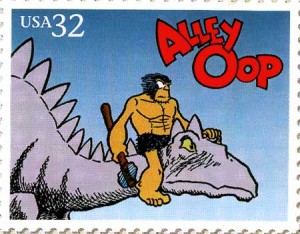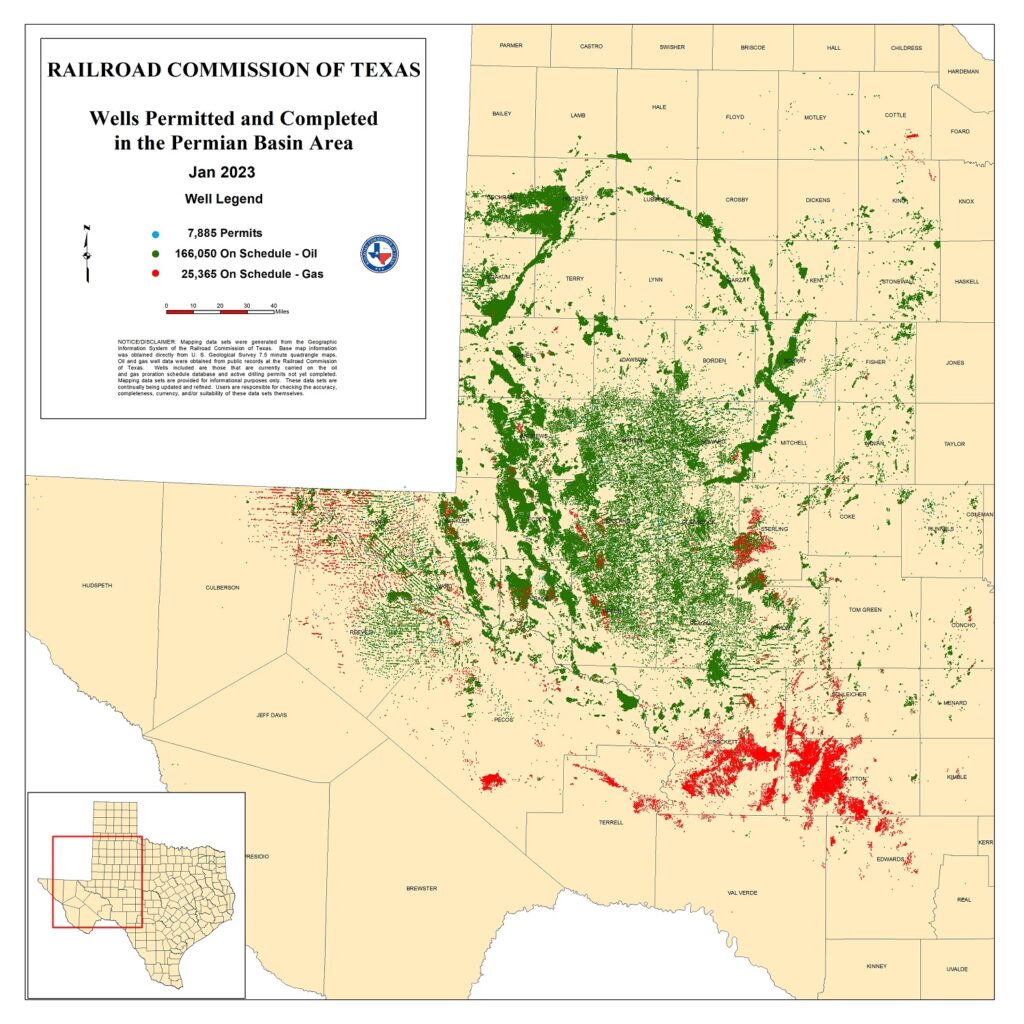Caveman cartoonist Victor Hamlin worked as an oilfield cartographer in Permian Basin.
The widely popular Depression Era newspaper comic strip character Alley Oop began in the imagination of a young cartographer who drew Permian Basin oilfield maps in Texas.
The club-wielding Alley Oop caveman appeared for the first time in the summer of 1933 when Victor Hamlin, a former Ft. Worth Star-Telegram reporter, published fanciful tales about the Stone Age Kingdom of Moo. Hamlin began syndicating his daily cartoon in Iowa’s Des Moines Register.
The cartoonist’s idea for a fanciful Paleolithic Age comic strip that would be featured in more than 800 newspapers began in a small oil “company town” in the Permian Basin of West Texas.

A 1995 U.S. postage stamp commemorated the Alley Oop character of Victor Hamlin, a cartoonist and cartographer who once drew oilfield maps during the Yates drilling boom at Iraan, Texas.
The oil town of Iraan (pronounced Eye-Rah-Ann) later would proclaim itself the inspiration for Alley Oop. According to locals, Hamlin’s popular comics trip character was conceived in the arid region’s earliest — and still active — oilfields.
Permian Basin Discoveries
Permian Basin oil production began on July 20, 1920, when a wildcat well in Mitchell County erupted on land owned by Texas Pacific Land Trust agent William H. Abrams. Just weeks earlier, another of his exploratory wells had revealed an oilfield in Brazoria County south of Houston.
The latest Abrams well, which was “shot” with nitroglycerin by the Texas Company (later Texaco), led to more West Texas oilfield discoveries in the Permian Basin, eventually encompassing 75,000 square miles and reaching into southeastern New Mexico.
In May 1923, when the Santa Rita No. 1 well roared in on land owned by the University of Texas, major oil companies joined smaller, independent companies in a rush to explore the extent of the massive, petroleum-rich geologic formation.

Once called a West Texas “petroleum graveyard,” the first Permian Basin oilfield was discovered in 1920 in Mitchell County. Map of 2023 oil and natural gas fields courtesy Texas Railroad Commission.
The Permian Basin at the end of 2022 accounted for nearly 40 percent of all U.S. oil production and nearly 15 percent of natural gas production, according to the Texas Railroad Commission (RRC).
Oilfield Cartographer
Iraan became a Texas boom town following the discovery of the Permian Basin’s Yates oilfield on October 28, 1926. The southeastern Pecos County town’s unusual name combined the first names of townsite owners Ira and Ann Yates.
The Ira G. Yates 1-A well of Mid-Kansas Oil and Gas Company and Transcontinental Oil Company produced 450 barrels of oil a day from a depth of 992 feet in the San Andres geologic formation. It revealed the giant Yates oilfield, which brought prosperity to Midland and Odessa with production of more than 40 million barrels of oil in three years.
Permian Basin discoveries also attracted Victor Hamlin, a young cartoonist from Perry, Iowa. Hamlin, who reportedly witnessed the first oil gusher at Iraan, had been hired by an oil company as a cartographer making site maps. His work led to the creation of Alley Oop, according to comic-strip historian Mike Hanlon.
As West Texas and Iraan grew in the late 1920s, Hamlin worked long hours in Permian Basin oilfields. “He could watch dinosaur bones being removed by the steam shovels and scrapers as they cleared the sites for drilling, wells, and pumps,” Hanlon explained in “The Man Who Walked With Dinosaurs.”
“It was in Texas that he took his first airplane ride and subsequently did aerial photography of oilfields,” added another Hamlin researcher for an article in The Comic Journal. The future creator of Alley Oop developed a life-long interest in geology and paleontology.
The 2012 journal article noted that Hamlin and wife Dorothy discussed ideas for a cartoon “fueled by geological lore.” Hamlin said they settled on what they felt would have outstanding eye appeal, a strip featuring dinosaurs, adding, “That subject would be just the ticket for a couple of ambitious young folks from Texas where Sinclair Oil Company had made the big prehistoric reptiles a startling advertising showpiece.”
Hamlin also began doing artwork for petroleum industry publications as he became even more fascinated by the Permian Basin’s desolate landscape — and the dinosaurs that once roamed there.
Singing Alley Oop Oop
The official start date of Victor Hamlin’s famed caveman as a daily comic strip was August 7, 1933, when “Alley Oop” began syndication with the Newspaper Enterprise Association. The caveman’s adventures in the prehistoric nation of Moo would appear in many Sunday newspaper pages.
Decades after the roughnecking days of Iraan ended, the Hollywood Argyles released a song describing Alley Oop as “the toughest man there is alive.” The 1960 song reached number one on the Billboard Hot 100 that year as another version of Alley Oop also was popular.

The Alley Oop R.V. Park, owned by the City of Iraan, can be found off I-10, on Alley Oop Lane.
With improved 21st century drilling and oil recovery techniques, production from the Yates field has continued — with millions of barrels of recoverable oil remaining. Meanwhile, West Texas travelers have discovered the Alley Oop R.V. Park at the northwest edge of Iraan.
Although Hamlin retired in 1971 and died in 1993, his daily Stone-Age strip still appears in hundreds of newspapers, now created by Jack and Carole Bender. The former oilfield cartographer’s Alley Oop was selected as one of the 20 U.S. Postal Service commemorative “Comic Strip Classics” postage stamps in 1995.
Petroleum production from Iraan’s Yates oilfield doubled in 1976, following saltwater injections to maintain pressure and Marathon becoming operator of the field’s unitization. The Pecos County black giant produced its billionth barrel of oil on January 11, 1985.
_______________________
Recommended Reading: Yates: A family, A Company, and Some Cornfield Geology (2000); Alley Oop’s Ancestors: The Newspaper Cartoons of V.T. Hamlin (2015). Your Amazon purchase benefits the American Oil & Gas Historical Society. As an Amazon Associate, AOGHS earns a commission from qualifying purchases.
_______________________
The American Oil & Gas Historical Society (AOGHS) preserves U.S. petroleum history. Please become an AOGHS annual supporter and help maintain this energy education website and expand historical research. For more information, contact bawells@aoghs.org. © 2024 Bruce A. Wells.
Citation Information – Article Title: “Alley Oop’s Oil Roots.” Authors: B.A. Wells and K.L. Wells. Website Name: American Oil & Gas Historical Society. URL: https://aoghs.org/petroleum-art/alley-oop-origin-in-permian-basin. Last Updated: September 9, 2024. Original Published Date: August 2, 2015.



